
Kyrgyzstan
General information
Kyrgyzstan, a fabulous Central Asian country, is very popular with tourists and still shows great tourism potential. It has a long and eventful history and boasts a number of unique heritage sites dating from various times, including the era of the Silk Road caravan tracks, which once ran through its today’s territory; and it is of course a country of fascinating natural sites, a grandiose mountain kingdom. The Tien Shan system of mountain ranges covers 80% of its area, featuring the extremely high mountains Pobeda Peak (7,439m), Lenin Peak (7,134m) and Khan-Tengri Peak (6,995m). Lovers of mountaineering, trekking, downhill skiing, snowboarding and other adventure tourism activities regard Kyrgyzstan as one of the world’s best vacation destinations.
Kyrgyzstan’s Issyk-Kul Lake, the world’s second largest mountain lake (after Titicaca in the Andes), makes the country a wonderful beach resort destination as well. Issyk-Kul’s turquoise waters, wonderful beaches, numerous recreation and health centers and spas are always a guarantee of a perfect summer vacation.
Bishkek and Osh, the major cities of the country, are also worth visiting. They are different in many aspects but both have something a tourist will certainly enjoy.
Since recently jayloo tourism has been rapidly growing in Kyrgyzstan. (The Kyrgyz for jayloo is “a summer alpine pasture”.) It is a new type of ecotourism involving visits to remote mountain grazing areas, with stays in the local shepherds’ yurts. (A yurt is a strong circular domed dwelling structure made of skins or felt stretched over a collapsible lattice framework and used by the nomadic peoples of Asia.)
Once in Kyrgyzstan, tourists also enjoy the intrinsic hospitality of the local people, exotic Kyrgyz cuisine and most interesting local traditions carefully preserved and practiced. Let's discover Kyrgyzstan with Adventure Asia!
Kyrgyzstan itineraries
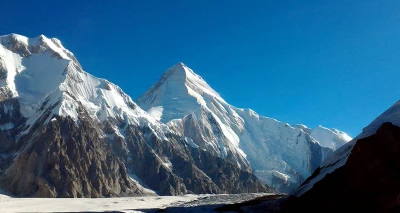
Cultural tour to Kyrgyzstan, China and Kazakhstan
This tour starts in Kyrgyzstan, moves into China, then ends in Kazakhstan for a Silk Road journey you will never forget. Begin by touring Kyrgyzstan’s capital city if Bishkek, then goes on a visit to an ancient Silk Road minaret, a small village that is famous for its traditional handmade carpets, a remote alpine lake, and a silk road caravanserai. Next, you will journey into China, where you will explore a massive market in Kashgar, visit the country’s largest mosque, and then travel to Urumqi, where you will get to see Red Hill. The tour finishes up in Kazakhstan, where you will take a tour of the gorgeous city of Almaty. Museums, squares, churches, Bazaars, and mosques are just a few of the things you will be exposed to in the city. Finally, end the tour with a trip to a large Petroglyph site that contains roughly 4,000 unique petroglyphs with some drawings that are over 3,000 years old.
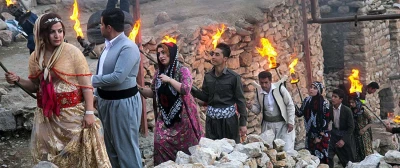
New Year In Orient – Kyrgyzstan
Nowruz derives from the Persian word "new day". It is a big festival, which is celebrated in Iran and Central Asian countries. It is called differently within Central Asian countries, which were influenced once upon a time by Persia. Nowruz is a very important event because of the new season, spring comes after winter, bringing blossoming and "new life". In Kyrgyzstan and Central Asian countries, Nowruz is celebrated on March 21. It’s greatly celebrated all over Kyrgyzstan. For instance, in the city of Bishkek, city authorities organize a big holiday, people set up yurts in public places and prepare traditional meals; like ‘SUMOLOK’ which is a very special meal cooked only for this occasion. Cooking takes almost 12 hours and can be lengthy, with 2 weeks of preparation. One can say this holiday is equivalent to New year’s importance. During Nowruz, traditional horse races take place all over the country, and during this tour, you can experience the period of Nomadic spring life. It’s not an opportunity you should miss!

Holy places in Kyrgyzstan
Sulayman Mountain is the only UNESCO World Heritage site in the country of Kyrgyzstan. It is located in the city of Osh and was once a major place of Muslim and pre-Muslim pilgrimage. The rock rises abruptly from the surrounding plains of the Fergana valley and is a popular place among locals and visitors, with a splendid view. According to UNESCO, the mountain is the most complete example of a sacred mountain, anywhere in Central Asia, worshiped over several Millennia. There is also an Open Air Museum, sometimes referred to as a Stone Garden, which covers some 42 hectares and contains a number of prehistoric monumental structures and petroglyphs. This tour affords you the opportunity to visit these sacred sites and much more.

Kyrgyzstan Mountain biking tour
Kyrgyzstan is a paradise for cyclists as one can find here routes of any level of difficulty. Being a mountainous country, it offers a wide range of landscapes and roads that take you from alpine meadows to sandy beaches, nomadic families, who will welcome you into their yurt for a taste of the Kumis (fermented mare’s milk) and a big role in all of this plays Issyk Kul lake. The historical and cultural aspects of Kyrgyzstan are very interesting as well. We still have all the attributes of Nomadic life. Only in Kyrgyzstan, in the summertime, we can see yurts, real nomads and their horses, who are always at your service to ride, if only you would like to.

Kyrgyzstan bike tour
If you are a big fan of outdoor activities and a landscape lover, if you are passionate about bike trips and you love setting the goal and reaching it, then high mountain passes are just temporary difficulties on the way to something truly amazing. Bike tours in Kyrgyzstan are all about it. Surrounded by mountains, lakes, and forests, it has an unlimited number of spots for mountain bike trails. Each can find his favorite bike trek depending on experience, level of fitness, type of trail, landscape, and other preferences. Be sure any trail will give you a unique and magical experience combined with tons of fun during this journey.

Kyrgyzstan horse riding tour
It is a great opportunity to take a horse tour to visit the most beautiful mountain scenery. Kyrgyzstan is one of the best places for horse riding. Come along on a fabulous tour on the back of a Kyrgyzstan horse. This is ideal for anyone looking for personal experiences. You will trace interesting routes during a horseback riding tour in Kyrgyzstan, visit the most picturesque places, inspiring nature, and get in touch with nomad culture and life.
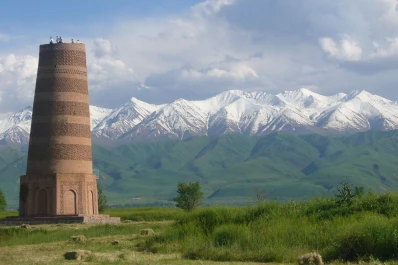
Welcome to nomads Land in Kyrgyzstan
Experience the sublime landscapes and fascinating nomadic culture of Kyrgyzstan on this special tour. This tour covers the most rugged, mountainous stretch of the old Silk Road between China and Uzbekistan- a region of sunlit snow peaks, vast blue-green glacial lakes, and pastures dotted with yurt encampments. In addition to seeing some of the most spellbinding vistas in Central Asia, you’ll also get to experience life in a genuine nomad camp, some traditional Kyrgyz and Uyghur cuisine, cooking local food, and also learn about the region’s Russian colonial legacy through its art and architecture.
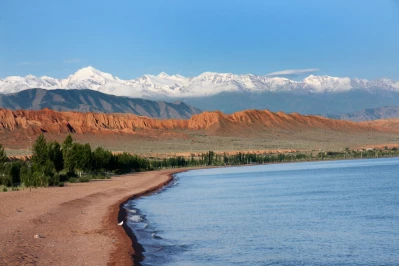
Under The Roof Of The Kyrgyz Mountains
Kyrgyzstan is one of those countries where the majority of the area is covered with mountain ranges. In the case of Kyrgyzstan, it is 90%. Is worth mentioning that 41% of the country is located above an elevation of 3,000 meters. The mountains are rough and rocky, but in some places, there are heavenly lush and green, characterizing the environment of an oasis. Whether you want to trek, go for a mountain walk, raft on the rivers, spend your night in the camps, or sit and relax, the mountains of Kyrgyzstan will always welcome you with their warm arms wide open.
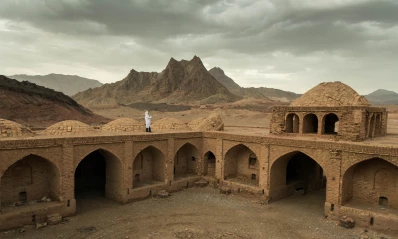
Kyrgyzstan Mountain Adventure Tour
Explore the best of the Alay mountains on this tour and discover one of the most stunning mountain regions in the world that are still unknown. This tour combines some of the best landscapes, trekking, and nomadic cultural experiences in all of Kyrgyzstan, including incredible mountain vistas at Sary Mogul and Jiptick mountain passes, where you will feel as though you’ve landed on another planet. Diverse landscapes, from turquoise alpine lakes and lush green valleys to high desert moonscapes, and the red rock formations of ‘ Three Dragon Gorge’, sleeping in a traditional yurt where you’ll have an opportunity to meet Kyrgyz shepherds, learn about the conventional Nomadic culture and enjoy home-cooked meals.

Cultural tour to Kyrgyzstan, China and Kazakhstan
This tour starts in Kyrgyzstan, moves into China, then ends in Kazakhstan for a Silk Road journey you will never forget. Begin by touring Kyrgyzstan’s capital city if Bishkek, then goes on a visit to an ancient Silk Road minaret, a small village that is famous for its traditional handmade carpets, a remote alpine lake, and a silk road caravanserai. Next, you will journey into China, where you will explore a massive market in Kashgar, visit the country’s largest mosque, and then travel to Urumqi, where you will get to see Red Hill. The tour finishes up in Kazakhstan, where you will take a tour of the gorgeous city of Almaty. Museums, squares, churches, Bazaars, and mosques are just a few of the things you will be exposed to in the city. Finally, end the tour with a trip to a large Petroglyph site that contains roughly 4,000 unique petroglyphs with some drawings that are over 3,000 years old.

Kyrgyzstan bike tour
If you are a big fan of outdoor activities and a landscape lover, if you are passionate about bike trips and you love setting the goal and reaching it, then high mountain passes are just temporary difficulties on the way to something truly amazing. Bike tours in Kyrgyzstan are all about it. Surrounded by mountains, lakes, and forests, it has an unlimited number of spots for mountain bike trails. Each can find his favorite bike trek depending on experience, level of fitness, type of trail, landscape, and other preferences. Be sure any trail will give you a unique and magical experience combined with tons of fun during this journey.

New Year In Orient – Kyrgyzstan
Nowruz derives from the Persian word "new day". It is a big festival, which is celebrated in Iran and Central Asian countries. It is called differently within Central Asian countries, which were influenced once upon a time by Persia. Nowruz is a very important event because of the new season, spring comes after winter, bringing blossoming and "new life". In Kyrgyzstan and Central Asian countries, Nowruz is celebrated on March 21. It’s greatly celebrated all over Kyrgyzstan. For instance, in the city of Bishkek, city authorities organize a big holiday, people set up yurts in public places and prepare traditional meals; like ‘SUMOLOK’ which is a very special meal cooked only for this occasion. Cooking takes almost 12 hours and can be lengthy, with 2 weeks of preparation. One can say this holiday is equivalent to New year’s importance. During Nowruz, traditional horse races take place all over the country, and during this tour, you can experience the period of Nomadic spring life. It’s not an opportunity you should miss!

Kyrgyzstan bike tour
If you are a big fan of outdoor activities and a landscape lover, if you are passionate about bike trips and you love setting the goal and reaching it, then high mountain passes are just temporary difficulties on the way to something truly amazing. Bike tours in Kyrgyzstan are all about it. Surrounded by mountains, lakes, and forests, it has an unlimited number of spots for mountain bike trails. Each can find his favorite bike trek depending on experience, level of fitness, type of trail, landscape, and other preferences. Be sure any trail will give you a unique and magical experience combined with tons of fun during this journey.

Kyrgyzstan horse riding tour
It is a great opportunity to take a horse tour to visit the most beautiful mountain scenery. Kyrgyzstan is one of the best places for horse riding. Come along on a fabulous tour on the back of a Kyrgyzstan horse. This is ideal for anyone looking for personal experiences. You will trace interesting routes during a horseback riding tour in Kyrgyzstan, visit the most picturesque places, inspiring nature, and get in touch with nomad culture and life.

Welcome to nomads Land in Kyrgyzstan
Experience the sublime landscapes and fascinating nomadic culture of Kyrgyzstan on this special tour. This tour covers the most rugged, mountainous stretch of the old Silk Road between China and Uzbekistan- a region of sunlit snow peaks, vast blue-green glacial lakes, and pastures dotted with yurt encampments. In addition to seeing some of the most spellbinding vistas in Central Asia, you’ll also get to experience life in a genuine nomad camp, some traditional Kyrgyz and Uyghur cuisine, cooking local food, and also learn about the region’s Russian colonial legacy through its art and architecture.

Under The Roof Of The Kyrgyz Mountains
Kyrgyzstan is one of those countries where the majority of the area is covered with mountain ranges. In the case of Kyrgyzstan, it is 90%. Is worth mentioning that 41% of the country is located above an elevation of 3,000 meters. The mountains are rough and rocky, but in some places, there are heavenly lush and green, characterizing the environment of an oasis. Whether you want to trek, go for a mountain walk, raft on the rivers, spend your night in the camps, or sit and relax, the mountains of Kyrgyzstan will always welcome you with their warm arms wide open.
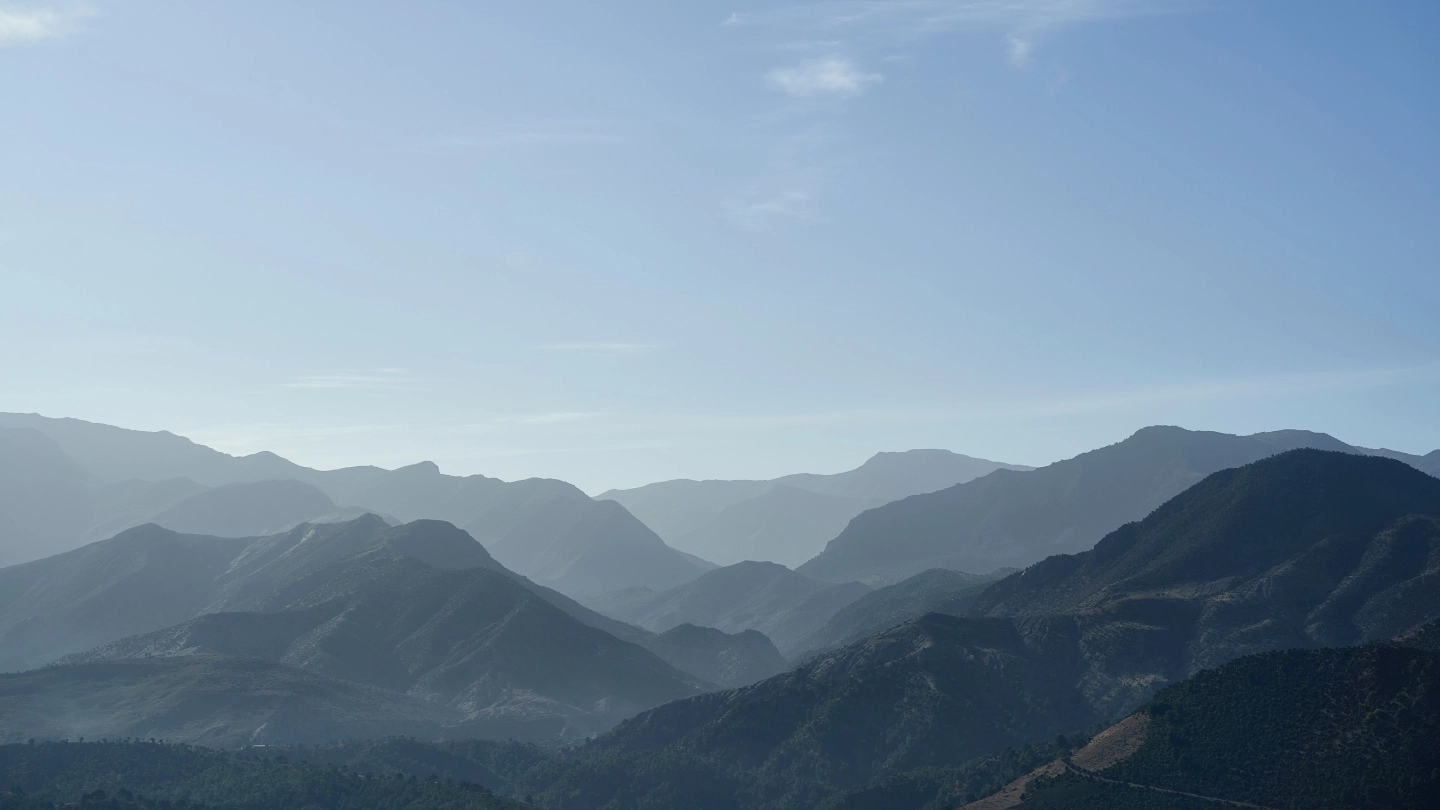
Why Adventure Asia
The company aims to serve soft/medium vacation options to the experienced adventure customer seeking uniquely styled expeditions, rather than traditional tourist-oriented itineraries that are prevalent.
Event Festival
Browse a month-by-month breakdown of suggested itineraries, seasonal activities, climate considerations and festivals.
Annual Ski Challenge Arslanbob
Strolling in Arslanbob’s walnut forest (optional);
Kyrgyz-Uzbek folklore show
Horseball Game in Toktogul
Weather and Climate
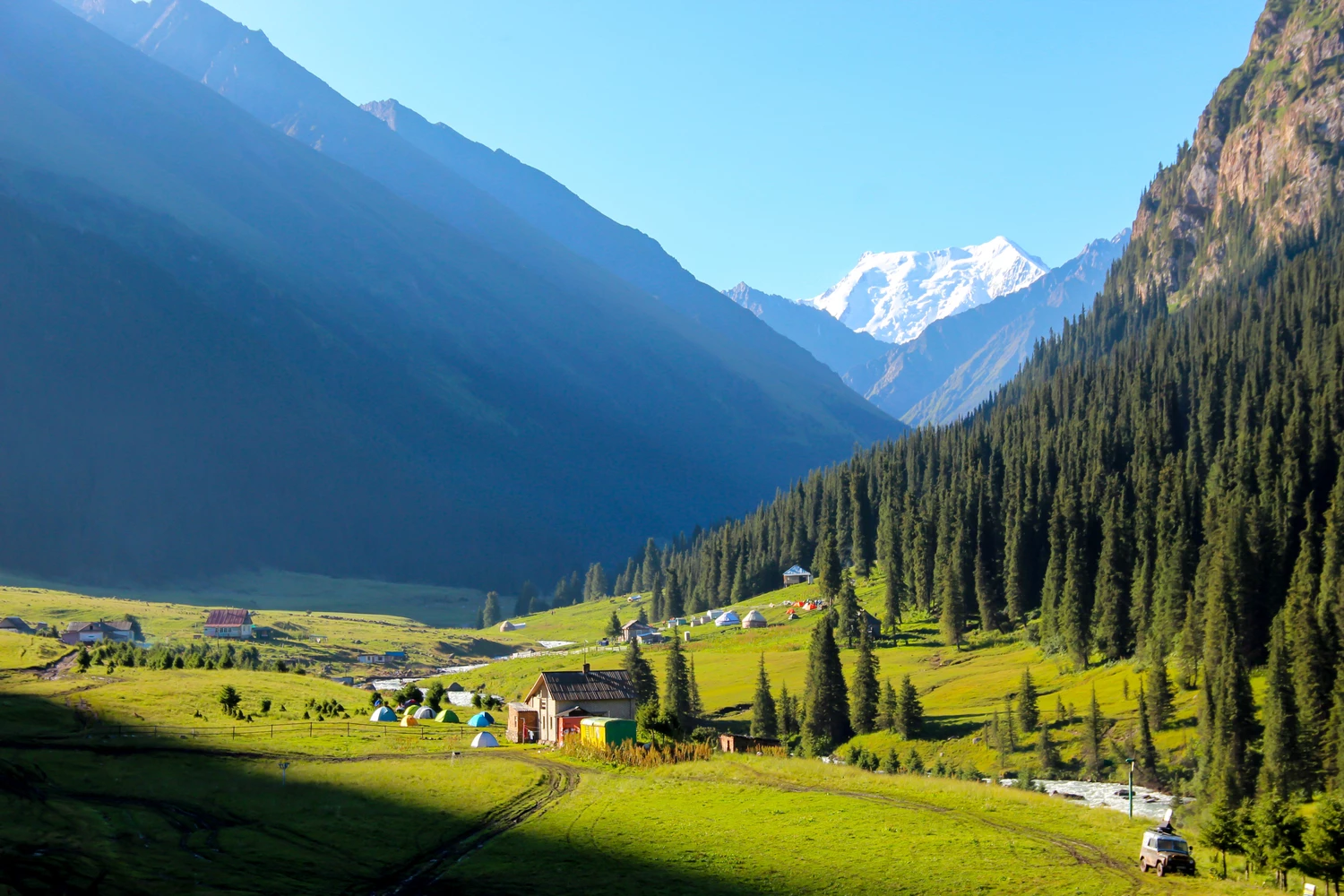
The climate in Kyrgyzstan is generally sunny, averaging only about 70 days of rain a year. The climate is continental, because Kyrgyzstan is located so far from any ocean. Though the summers in the cities can get quite hot, the mountains remain colder even in the hottest months. Winters are cold and snowy everywhere, especially at higher elevations. Days tend to be significantly warmer than nights, but the general climate of Kyrgyzstan is quite pleasant, with four defined seasons.
In Bishkek, winter is mostly sunny, with occasional heavy fog and snowstorms. The average daily high in winter reaches 3° C (37.4° F). Spring is generally mild, with the first hot days coming in May and June. During the summer, the temperature averages 31° C (87.8° F), though temperatures can soar even higher, as high as 45° C (113° F). Many places have air conditioning, but certainly not all. In fall, all the leaves turn bright colors, and rainy days are more common. Spring and fall tend to be shorter than winter and summer.
Issyk-Kul averages slightly cooler temperatures than Bishkek, making it popular during the hot summer months. During the summer tourist season, the average high temperature is 19° C (66° F), making for comfortable swimming but the nights can be cold. In the winter, the temperature drops to an average of -10° C (14° F), and snow is common. There are plenty of ski bases and opportunities for winter sports at Issyk-Kul, since the temperatures are chilly but not unbearably cold.
At higher altitudes, the temperature never reaches very high, and snow is possible year round. Summers can be pleasant, with July averaging 17° C (63° F) in Naryn. Even so, snow can fall at any time and the nights can be quite cold, so visitors are advised to bring warm clothing. Some regions have the most severe winter weather of Kyrgyzstan’s climate, with temperatures dropping as low as -27° C (-16.6° F), and sometimes even lower. Deep snow makes many roads impassable, so many destinations can only be reached in the summer months. The weather in the mountains at any time can be quite unpredictable, with sudden changes that can leave unprepared travelers cold and wet, or even in serious danger.
Osh tends to be warmer than the northern half of Kyrgyzstan, with temperatures routinely well above 30° C (86° F) in the summer, though nights are cooler. Winter is generally cold, with an average temperature around freezing, and most of the rain falling in the winter and spring. Again, air conditioning can be found, but not everywhere, though heating is very common for the winter.
Travel FAQs
Essential Information
The nomad clans of Kyrgyzstan were famous for their hospitality, kindness, and openness, the same traits that continue to this day. They are a warm, inviting sort of people: it’s likely that you’ll be welcomed into homes with as little as an introduction to acquaint you. That said, most travellers’ first reason for coming to Kyrgyzstan is not to sit and chat with the locals. Guests have always been welcomed and honored among the Kyrgyz people. There were three types of guests: First, mildetuu konok were ‘obligatory guests,’ arriving for attendance at a wedding or funeral, and accommodations for these guest would be distributed among related families or entire villages. Second, taanysh konok, or ‘familiar guests,’ would include distant relatives or friends, who could be treated more casually, depending on the relationship between the host and guest. And lastly, were the kydaly konok, or ‘god’s guests,’ which would refer to travelers who would ask for shelter. Kyrgyz families were obliged to provide food and a night’s shelter to anyone who stopped near their home at sunset and asked if they could stay. If the family were too poor, then relatives would be required to come to their assistance. It was important to preserve the good name of the clan and avoid “evil gossip” about their lack of hospitality. Visitors have many opportunities for home stays with Kyrgyz families or accommodation in yurt camps that offer a glimpse into the nomadic life of yesteryear. Yurts themselves symbolize the connection between the Kyrgyz and their land. Decorated with traditional felt carpets called shyrdaks and other embroidered handiwork, yurts offer warm and comfortable shelter during cool nights in mountain meadows at high altitudes. Kyrgyzstan is a place of stunning natural beauty, chiefly due to the mountainous terrain which occupies it. The snow-covered peaks of Tian Shan march along the southeastern border, delivering breathtaking views and great opportunities for adventure. Though few people are aware of it, Kyrgyzstan has skiing and mountaineering possibilities to match the best of ’em – the only difference is that there are fewer tourists (and, understandably, less tourist facilities). But the country’s on the rise: with desperately little to sell the outside world, Kyrgyzstan is actively promoting itself as one of Central Asia’s best destinations.
Getting There
The fastest and the most comfortable way to get to Kyrgyzstan is to fly to the Manas Airport in Bishkek that receives daily flights from the largest cities of Europe and Asia. It is also possible to fly to the southern city of Osh, where you can take flights only from Central Asia and central parts of Russia. Driving to Kyrgyzstan is possible from China, Kazakhstan, Tajikistan and Uzbekistan. You can also travel to Bishkek by train from Moscow and other cities of Russia, but it would be a long and uncomfortable path.
Getting Around
By Plane There are several daily flights between Bishkek and Osh. There are also a few flights a week between Bishkek and Jalal-abad and Batken. The flights are operated on local airlines using 30-40 year old soviet planes. On the other hand, the mechanics and pilots are well trained how to operate these old beasts. By Train The only domestic rail link is the summer-only train between Balykchy (Western edge of Issyk Kul) to Tokmok through to Bishkek. It’s a scenic route but the train takes at least twice as long as a taxi and it’s half the price. You may meet a lot of interesting folks, mostly pensioners, that need the 40-80 soms they would save by taking a mini-bus or taxi. Otherwise, there is ca one train per day to the Kazakh border (and onward to Russia).. By (rental) car Tourists renting a private car and driving in Kyrgyzstan is virtually unheard of and not recommended. The roads are in poor shape, police is highly corrupt, auto insurance doesn’t exist, and hiring a taxi is too easy and cheap to make this an option. Long-term foreign residents frequently drive, but many opt to use a driver. By Bus Buses and minibuses go to most major cities and towns, but services are slow, crowded, uncomfortable and can be dangerous as well. Shared taxis are a much better way to get around. Prices are higher but it is much more reliable and faster as well. On foot and navigation Kyrgyzstan is an excellent place for hiking and trekking, providing many interesting and picturesque trails in the mountains or around its lakes. For reliable maps and comprehensive trails and map information, consult OpenStreetMap, which is also used by this travel guide, and by many mobile Apps like OsmAnd (complex with many add-ons) and MAPS.ME (simple but limited).
Visa and Permits
Most nationalities do not require a visa to travel to Kyrgyzstan for up to 60 days, including Australia, Belgium, UK, Germany, Netherlands, Canada, New Zealand, Ireland, USA and Switzerland. Other nationalities should check with their nearest embassy and obtain a visa in advance if required. Please contact us should you need any supporting documents for your visa application. If you do require a visa you will need to obtain one through your closest consulate.
Local Customs
Kyrgyzstan has a secular constitution. Most Kyrgyz people are Muslims. You should respect local traditions, customs, laws and religions at all times and be aware of your actions to ensure that they do not offend other cultures or religious beliefs, especially during the holy month of Ramadan or if you intend to visit religious areas. Lack of cultural sensitivity has caused trouble for some unaware foreign nationals. Though nominally a Muslim country the Kyrgyz people are highly westernized. No special dress codes are in effect. Although standards of dress in Bishkek are Western and often revealing, in the south of the country women should dress more conservatively or risk attracting unwanted male attention. Kyrgyzstan show respect by shaking their hands towards older people and offering them your seat. Old men, called aksakals (“white beards”) are treated with great respect. Respect is given to elders and authority figures. Verbal respect is given by using the polite pronoun and endings, and by using the titles eje (older sister) and baikay or aga (older brother). People always use these polite forms, even with close friends and relatives. Respect also is shown physically. Men and women alike will give up their seats to elders on public transportation. A person’s position at a table also shows his or her status. Men and women usually sit on opposite sides of a table, with the eldest and most respected at the head of the table, farthest from the door. The Kyrgyz are very hospitable and ceremonial. Any visitor, whether a friend or stranger, is invariably entertained with the best — mutton, sweet rice with cream and noodles with sliced mutton. Offering mutton from the sheep’s head shows the highest respect for the guest. At the table, the guest is first offered the sheep tail fat, shoulder blade mutton and then the mutton from the head. The guest should in the meantime give some of what is offered back to the women and children at the dinner table as a sign of respect on the part of the visitor. Anyone who moves his tent is entertained by his old and new neighbors as tokens of farewell and welcome. Most of the time, when people come into somebody’s house, they are supposed to take their shoes off in the corridor before going inside the rooms. Sometimes slippers are offered, sometimes not, and so you would stay in your socks. In the more conservative south, men and women often occupy separate rooms at large celebrations. Boys and girls do not commonly befriend each other.
Events and Festivals
January Annual Ski Challenge Arslanbob Strolling in Arslanbob’s walnut forest (optional); Kyrgyz-Uzbek folklore show Horseball Game in Toktogul February Day of the Defenders of the Motherland The holiday is celebrated with parades and processions in honor of veterans, and women also give small gifts to men in their lives, especially husbands (or boyfriends, fiancés), fathers, sons and brothers. March Perfect weather in the deserts of Turkmenistan, southern Tajikistan and Uzbekistan (towards the end of the month). The Karakum desert blooms like a Jackson Pollock canvas. Nauroz Central Asia’s biggest festival around the equinox (21 March in most republics; 22 March in Kazakhstan) marks the beginning of spring and the Persian new year with games of kokpar (traditional polo-like game played with a headless goat), family feasts and funfairs. April Spring is kicking in, as blooms start to appear in mountain foothills. An excellent month to visit lowland areas. Horse Day Turkmenistan’s Horse Day (the last Sunday in April) offers a chance for horse-lovers to see the country’s famous Akhal-Teke horses in action at hippodromes across the country. Bishkek Jazz Festival Three evenings of jazz jams at venues across Bishkek, with a dozen international acts attending. One of Central Asia’s better music festivals. May It’s starting to get hot in the lowlands, but can still be chilly in the highlands. High season in Uzbekistan means you should make advance hotel bookings. Watching Wildlife April and May are the best months to spot Kazakhstan’s 36 species of tulip, while May and June are the time to spot hundreds of migratory bird species, especially at Korgalzhyn Nature Reserve. Silk & Spices Festival Four-day cultural festival in Bukhara, featuring music and dance, folk art, fashion, handicrafts, exhibitions and maybe even the odd tightrope walker. It can be held in June too. July High summer is the time to visit the mountains of Kyrgyzstan, Tajikistan and southeast Kazakhstan. Rich pastures bring herders to their summer camps. National Horse Games Festival Kyzyl-Oi village in Kyrgyzstan’s Suusamyr Valley celebrates the summer pastures with games of ulak-tartysh (buzkashi; polo with a dead goat), horseback races, wrestling, traditional music and food. It’s generally the third or fourth Saturday of July. There are similar events at Son-Köl. Yak & Horse Games Festival Tulpar Köl yurt camp at the base of Peak Lenin in Kyrgyzstan’s Alay Valley (www.visitalay.kg) is the spectacular setting for these traditional horse games, with tug of war, live music and yak races. It’s on the third weekend in July. Bring a tent. Roof of the World Regatta Bring your windsurfer or kayak to this five-day festival on the shores of Karakul Lake in the remote Pamirs and take part in the world’s highest regatta. It’s held in the last week of July. August Summer continues to sizzle in the lowlands as the mercury hits 40°C (104°F). The good life is up in the mountains, with August a great month for trekking at higher altitudes. Independence Day, Kyrgyzstan There are parades, music concerts and traditional horseback games at Bishkek’s hippodrome on 31 August to celebrate the anniversary of Kyrgyzstan’s independence from the USSR in 1991. Birds of Prey Festival Visit Bokonbaevo, on the southern shores of Lake Issyk-Köl, to see hunting displays with golden eagles, folklore music and traditional ceremonies. Great for photos. Third Saturday of August. At Chabysh Horse Festival This lively horse-games festival (www.atchabysh.org) on the second weekend in August takes place in Murgab in Tajikistan’s eastern Pamirs and Peak Lenin in Kyrgyzstan. Count on horse races, equestrian games, handicrafts and Manas (Kyrgyz epic) recitals. September A great month to visit almost anywhere. Temperatures are still pleasant in the highlands, but the worst of the summer heat is over in the oases. Markets burst with fruit. “Nukura” festival in Nary city, Naryn region National traditions of Kyrgyzstan, products, demonstration of national dishes. In the program of the ethnic festival: National products, masters from schools showed masters cooking classes and national games will be held. A photo exhibit was presented at the Ala-Too Stadium of the “Too Koyndundy Sha’ar”. As well as national products, a fair was held. World Nomadic Games The first week of September brings an epic week of spectacularly photogenic nomadic sports, such as horseback wrestling, eagle hunting, archery and horse racing, to the north shores of Issyk-Köl near Cholpon-Ata. It’s held every two years, with the next events in 2018 and 2020 (www.worldnomadgames.com). October Autumn marathon In the walnut forest 8 km in Arslanbob village, Jalal-Abad 500soms to see folklore-show and have a lunch 1000 soms Participation in all activities with CBT Photo exhibition and local sale handicrafts, folklore show, wrestling with kids, donkey racing. Alma Festival in Naryn region, Jumgal district Stimulating and improving the quality of apple varieties grown in the Jumgal region December Opening of the winter season in Bishkek and its surroundings Event is held with the aim of attracting large sections of the population to physical culture and sports, educating camaraderie and unity. Exciting contests, fun relay races, practical jokes and many nice gifts await each participant.
What will it cost for a…?
Bottle of soft drink = 25 KGS Beer in a bar or restaurant = 40 KGS Cup of coffee = 45 KGS Three-course meal = 1000 KGS Short taxi ride = 80 KGS
Are credit cards accepted widely in Kyrgyzstan?
Credit cards are accepted in major shops and hotels in Bishkek and Osh, but rarely elsewhere. What is ATM access like in Kyrgyzstan? ATMs are available in Bishkek and Osh but harder to find outside of these cities.
Can I drink the water in Kyrgyzstan?
Drinking tap water in Kyrgyzstan isn’t recommended. For environmental reasons, try to avoid buying bottled water. Fill a reusable water bottle or canteen with filtered water. It’s also advisable to avoid ice in drinks and peel fruit and vegetables before eating.
What's your re fund policy?
Below is our cancellation and refund policy: 🔸 60 days prior to arrival date: No cancellation charge for the land cost. We guarantee 100% of the land cost back. The airline cancellation fees are applied according to the airline's policy. 🔸 59 - 30 days prior to arrival date: 5% cancellation charge + airfare cancellation fees 🔸 29 - 15 days prior to arrival date: 10% + airfare cancellation fees. 🔸 14 - 8 days prior to arrival date: 40 + airfare cancellation fees. 🔸 7 days prior to arrival date: 100% 🔸 No show: 100% Please note that the domestic flight tickets in the package are non-refundable





















